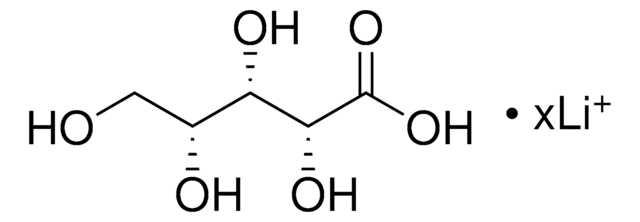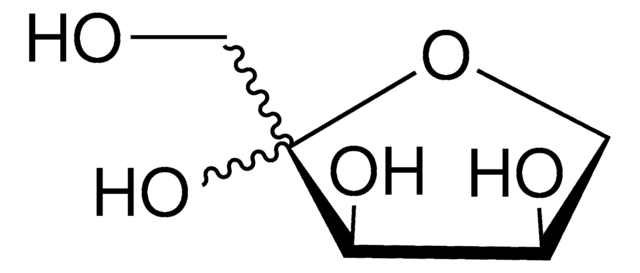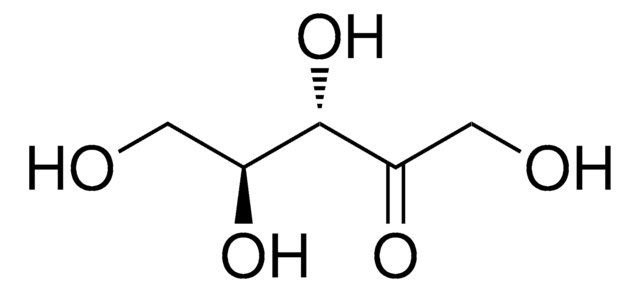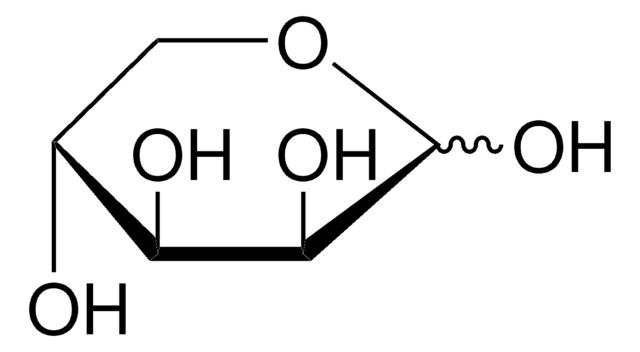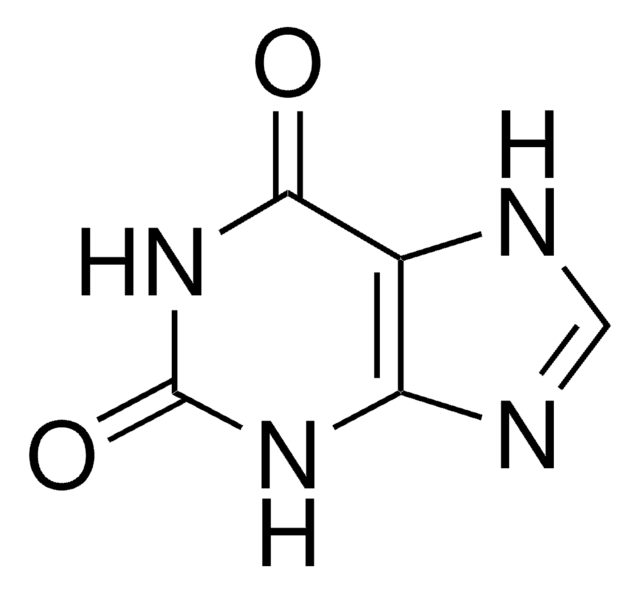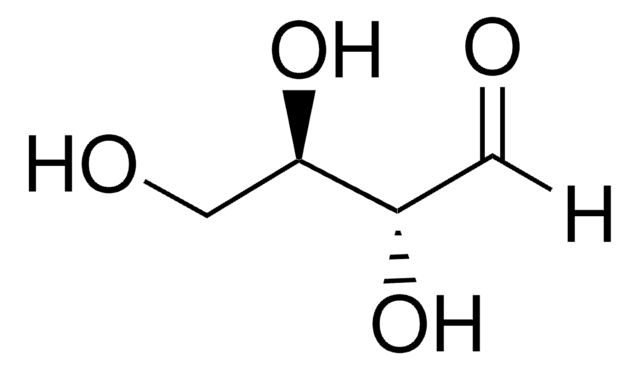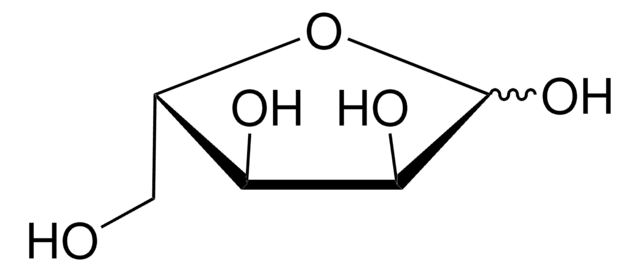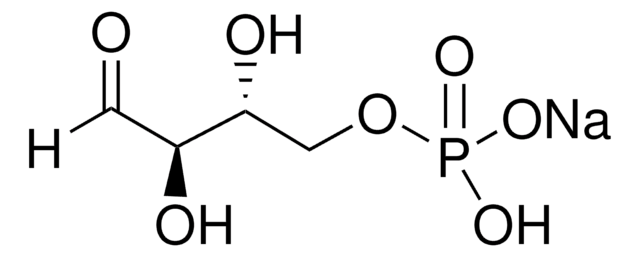X4625
D-Xylulose
≥95% (HPLC), syrup
Synonym(s):
D-threo-Pentulose
Sign Into View Organizational & Contract Pricing
All Photos(1)
About This Item
Empirical Formula (Hill Notation):
C5H10O5
CAS Number:
Molecular Weight:
150.13
Beilstein:
1723052
MDL number:
UNSPSC Code:
12352201
PubChem Substance ID:
NACRES:
NA.25
Recommended Products
Quality Level
Assay
≥95% (HPLC)
form
syrup
technique(s)
HPLC: suitable
color
faintly yellow
solubility
water: 50 mg/mL, clear, faintly yellow to yellow
storage temp.
−20°C
SMILES string
OCC1(O)OC[C@H](O)[C@H]1O
InChI
1S/C5H10O5/c6-2-5(9)4(8)3(7)1-10-5/h3-4,6-9H,1-2H2/t3-,4+,5?/m0/s1
InChI key
LQXVFWRQNMEDEE-PYHARJCCSA-N
Looking for similar products? Visit Product Comparison Guide
Biochem/physiol Actions
D-xylulose is a monosaccharide, converted from xylitol in the glucuronate pathway.
Other Notes
To gain a comprehensive understanding of our extensive range of Monosaccharides for your research, we encourage you to visit our Carbohydrates Category page.
Storage Class Code
10 - Combustible liquids
WGK
WGK 3
Flash Point(F)
Not applicable
Flash Point(C)
Not applicable
Personal Protective Equipment
dust mask type N95 (US), Eyeshields, Gloves
Choose from one of the most recent versions:
Already Own This Product?
Find documentation for the products that you have recently purchased in the Document Library.
Customers Also Viewed
Tien Anh Ngo et al.
Journal of the American Chemical Society, 138(9), 3012-3021 (2016-02-18)
We report the construction of an artificial enzyme cascade based on the xylose metabolic pathway. Two enzymes, xylose reductase and xylitol dehydrogenase, were assembled at specific locations on DNA origami by using DNA-binding protein adaptors with systematic variations in the
Misun Lee et al.
Biochemistry, 56(45), 5991-6005 (2017-10-19)
Xylose isomerase from Piromyces sp. E2 (PirXI) can be used to equip Saccharomyces cerevisiae with the capacity to ferment xylose to ethanol. The biochemical properties and structure of the enzyme have not been described even though its metal content, catalytic
Jenny P Glusker et al.
Acta crystallographica. Section D, Biological crystallography, 66(Pt 11), 1257-1261 (2010-11-03)
A description is given of the results of neutron diffraction studies of the structures of four different metal-ion complexes of deuterated D-xylose isomerase. These represent four stages in the progression of the biochemical catalytic action of this enzyme. Analyses of
Ye-Wang Zhang et al.
Applied microbiology and biotechnology, 90(2), 499-507 (2011-01-20)
Rare sugars have many applications in food industry, as well as pharmaceutical and nutrition industries. Xylitol dehydrogenase (XDH) can be used to synthesize various rare sugars enzymatically. However, the immobilization of XDH has not been performed to improve the industrial
Nichole F Huntley et al.
PloS one, 13(10), e0205913-e0205913 (2018-10-26)
It is important to understand if, and to what extent, the pig can utilize xylose as an energy source if xylanase releases free xylose in the small intestine. The experimental objectives were to determine the effects of industry-relevant dietary xylose
Our team of scientists has experience in all areas of research including Life Science, Material Science, Chemical Synthesis, Chromatography, Analytical and many others.
Contact Technical Service